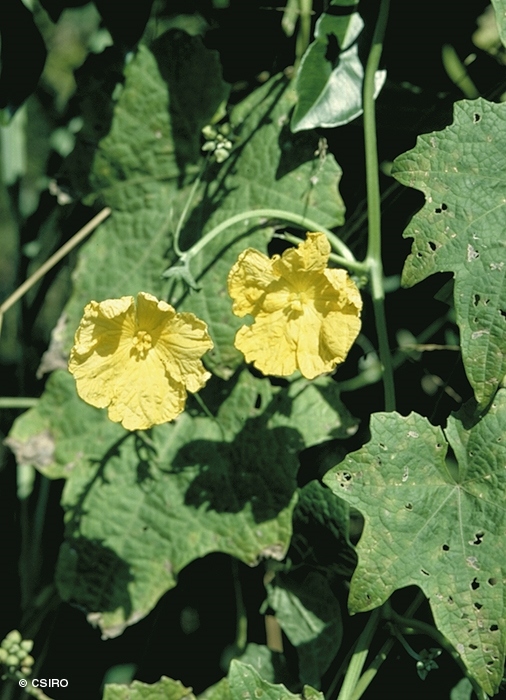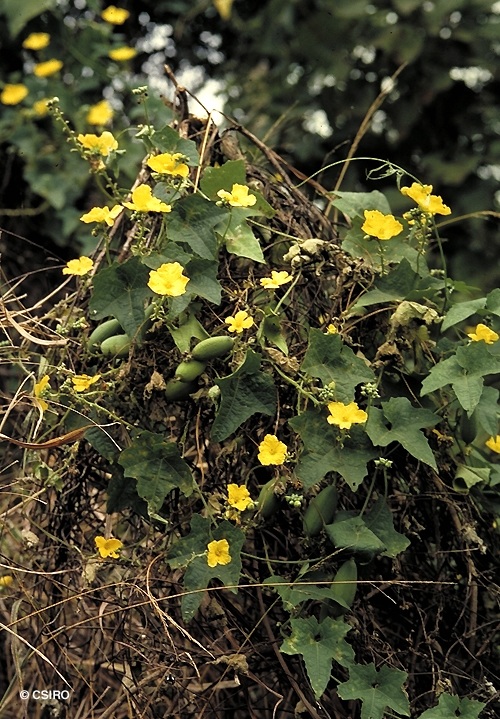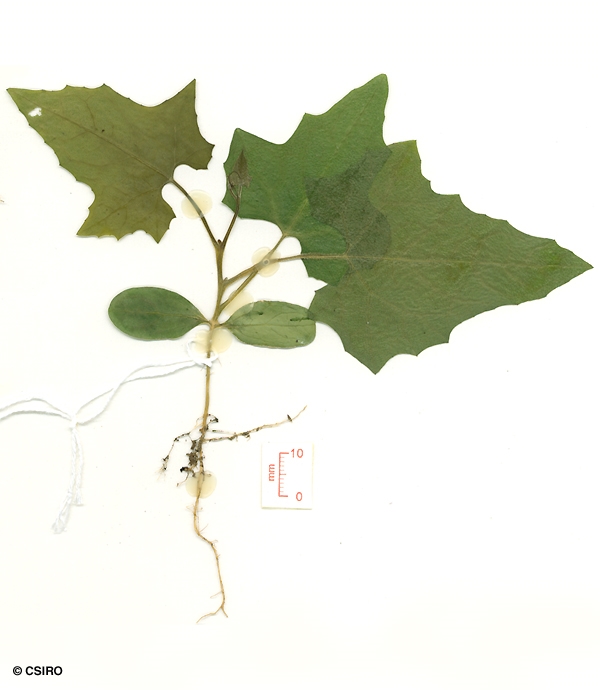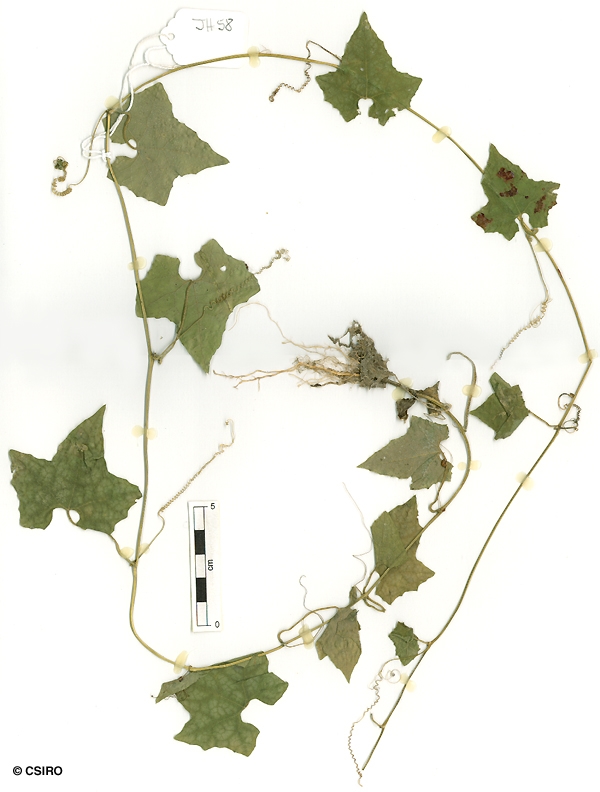Australian Tropical Rainforest Plants - Online edition
Luffa aegyptiaca Mill.







Miller, P. (1768) The Gardeners Dictionary : . Type: Cultivated plant.
Gourd, Sponge; Sponge Gourd; Towel Gourd; Vegetable Sponge; Gourd, Towel; Loofa
A slender vine not exceeding a stem diameter of 2 cm.
Leaf blades palmatifid, palmately lobed and veined, about 10-25 x 11-26 cm, petioles about 4-13.5 cm long, grooved on the upper surface. Upper and lower leaf blade surfaces clothed in short white hairs, lower surface also densely gland-dotted. Tendrils 3-5-branched, more lateral than leaf-opposed.
Male flowers in racemose bracteate inflorescences about 10-25 cm long. Hypanthium about 2-4 mm long, calyx lobes about 4-7 mm long. Petals about 12-20 mm long. Anther cells +/- sinuous. Stamens attached to the base of the hypanthium, filaments very hairy. Female flowers solitary on pedicels about 3-4 mm long. Staminodes five. Disk conspicuous below the staminodes, disk nectar producing. Ovary about 8-12 mm long, hairy and shortly spinose. Stigmas three, very hairy.
Fruits ellipsoid, about 6-10 x 3.5-4 cm with a large pore at the apex when mature. Inner fruit wall very fibrous except for a longitudinal cavity which facilitates the shedding of seeds. Seeds numerous, flat, about 9-10 x 6-7 mm with a narrow wing encircling the seed at the equator? Embryo about 6-7 x 4 mm, radicle short and pointed, about 1 mm long, much shorter and narrower than the cotyledons.
Cotyledons elliptic to ovate, about 24-45 x 13-23 mm, petioles short and broad. Lower surface +/- glabrous, upper surface densely clothed in short stiff hairs. First leaf blade +/- cordate, apex acute and apiculate, base cordate to auriculate, margin toothed and coarsely lobed. Upper and lower leaf blade surfaces scabrous, clothed in short stiff hairs which impart a sandpapery texture or feel. At the tenth leaf stage: leaf blade cordate, apex acuminate to aristate, base cordate to auriculate, margin toothed and lobed. Upper and lower surfaces clothed in short stiff hairs which impart a sandpapery texture or feel. Petioles about 2 cm long, twisted. Tendrils simple (unbranched) until about the eighth leaf. Tendrils associated with subsequent leaves are branched. Tendrils produced near the petiole junctions but are neither leaf opposed or axillary. Seed germination time 23 to 36 days.
Occurs in WA, NT, CYP, NEQ and CEQ. Altitudinal range from near sea level to 250 m. Grows in open forest, riparian vegetation, vine thicket, monsoon forest and gallery forest. Also occurs in New Guinea and other parts of Malesia.
This species may have medicinal properties.
Traditionally the dried fruits have been used as sponges.
For those who wish to recognise infraspecific taxa, the Australian material has been referred to L. aegyptiaca var. leiocarpa (Naudin) Heiser & Schilling.





